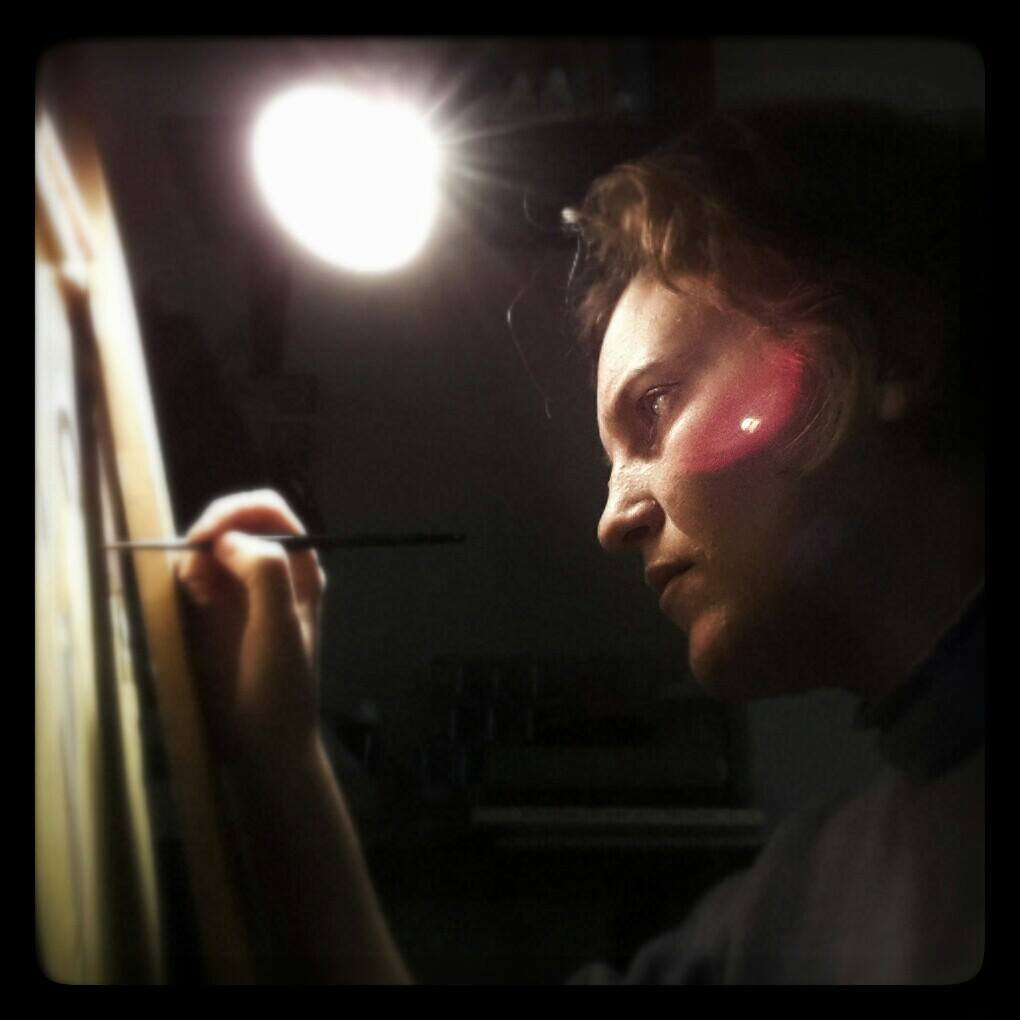Interview with Iconographer Julia Bridget Hayes (Orthodox Arts Journal)
Julia Bridget Hayes is a talented iconographer working in Greece. Her work is a truly wonderful example of creativity within tradition. We asked to interview her and to share these images of her work that she might become better known to our readers.
A. Gould: Julia, you were born in South Africa, but now you work in Greece. Did you discover the Orthodox faith there?
J.B. Hayes: Andrew, I was already Orthodox when I came to Greece. My family was Anglican but we left the Anglican Church back in 1985 and entered the Orthodox Church in 1987. So I’ve been Orthodox for most of my life.
A. Gould: How did you come to live and study there and how did you decide to pursue iconography as a serious vocation.
J.B. Hayes: The thought of coming to Greece and studying here, let alone becoming an iconographer had actually never crossed my mind, and how all those things came about was nothing short of a miracle. I had always drawn since I was a child. When I finished high school I studied photography which was my dream, but during my second year I had to stop my studies for economic reasons. In every spare moment I had I painted and about a year after leaving Photography school, I’d reached rock bottom and didn’t know what to do with my life. In my despair I asked God why I could paint, why it was the thing I do best and what I was meant to do with it. And that is where the adventure began! Just two days later a priest saw something I had drawn and said he’d send me to Greece for 6 months to learn iconography!
It was a year before I eventually arrived in Greece, and during that time I did a lot of soul searching reading up about the Orthodox Faith. And a crazy thought came to me – that I’d like to study theology, but that was impossible. Where and how would a girl from South Africa study Orthodox Theology? I put the idea aside and forgot about it. But nearly a year after the priest had told me he would send me to Greece, he told me once again, but this time he said that I would be going for 5 years…to university… and I had one night to decide what I would study! There was only one thing that I had ever contemplated studying at university – theology! So I came to Greece in 1997 with a bursary and studied theology at the University of Athens. I returned to South Africa for two years where I worked as an iconographer and also presented talks on Orthodox Iconography and did catechetical work. In 2005 I returned to Greece again for post-graduate studies in Liturgics.
A. Gould: What was it like studying with George Kordis? Though your work is quite distinctively your own, I can nevertheless see a lot of Kordis’ influence in it. What do you consider the most important things you have learned from him?
J.B. Hayes: I met George Kordis in 2008 when I was doing post graduate studies at the University of Athens where I attended both his practical classes and some of his theoretical classes on Theology of the Icon and Aesthetics of the Byzantine Icon. He also generously invited me to attend classes at the Centre of Orthodox Icon Painting Studies and Research Eikonourgia, where we were taught by a team of qualified and talented iconographers, led by Kordis himself. Before meeting him I’d had very little formal training in iconography, despite that being the original purpose of my coming to Greece. Due to the pressure of studies, I didn’t have the time to dedicate to learning iconography. I did attend a few lessons at a parish, but they didn’t even teach the basics of sketching. We were just shown the technique for painting an icon in the Cretan style, so I took what I could from there and worked on it myself with the help of books. I also later experimented with the Macedonian style. I had never really been satisfied with the idea of simply making “photocopies” of old icons which is pretty much the standard practice and has unfortunately been dubbed “tradition”, although, in fact it never was the tradition until the 20th century. Throughout the history of Byzantine iconography there was a continual creative development of certain aspects of painting, while others remained unchanged. So studying iconography under Kordis was liberating because he doesn’t simply teach one to mechanically copy old icons. Rather, he teaches the methods and principles of Byzantine painting and the visual theology and logos or rationale that lies behind it, which have remained unchanged despite the numerous stylistic changes that have occurred from one school or period of iconography to another. On the one hand, the way that line and colour function in the icon and the rules of composition and perspective are unchangeable elements, but style, on the other, is something that changes, not only between periods and schools such as the Comnenian period, or the Macedonian and Cretan schools, but also between one iconographer and another. So learning how to use these elements allows the iconographer the freedom to create within tradition.
Read more here: http://www.orthodoxartsjournal.org/an-interview-with-iconographer-julia-bridget-hayes/
Are you interested in learning Byzantine Iconography? Learn more about my tutorials on Patreon and Udemy
Would you like to commission a hand-painted icon?
If you enjoy my content consider buying me a cup of Kofi: https://ko-fi.com/ikonographics

